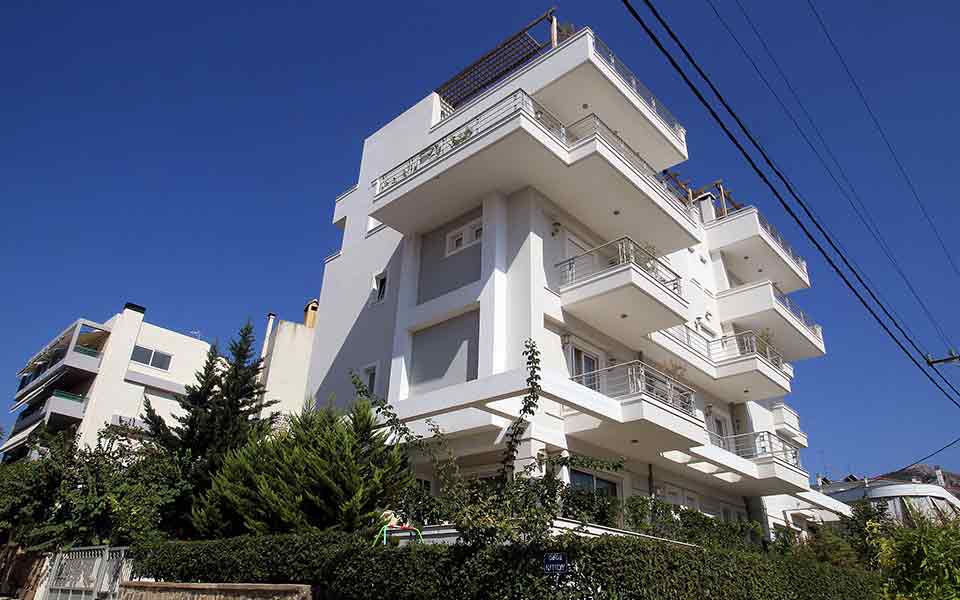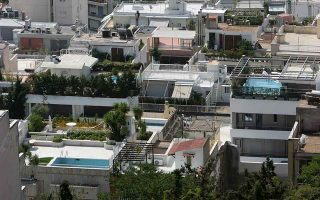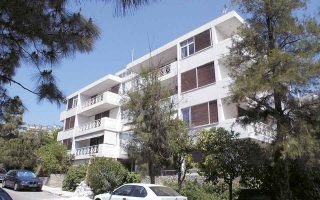Rents in Athens rise to prohibitive levels

The Athens residential market has rental rates in the last few months that in many cases exceed the highs seen before the outbreak of the financial crisis, resulting in many would-be tenants being unable to find properties that would cover their needs within their means.
Consequently many households are being forced to turn to ever smaller apartments, or areas that do not offer the best quality of living; alternatively they cut other expenditure in order to pay the high rent demanded. In any case the sudden hike in rental rates is undermining – to the point of offsetting altogether – the government’s efforts to strengthen household incomes and purchasing power.
A quick glance through the classified ads reveals that, for a large share of properties, the monthly rental rate comes to 600-800 euros – which, with the average salary at 1,000 euros, amounts to 60-70 percent of income – often without taking into consideration any price-determining critera such as age, district, floor, state of property, facilities etc. Would-be tenants complain and realty professionals observe that the asking rate often matches the needs or expectations of the landlord based on his or her personal perception.
The improvement in economic sentiment and the acceleration of growth have strengthened owners’ psychology, so that they believe they can pass hikes of 20 to 30 percent on to the market within just a few months. As Lefteris Potamianos, head of the Potamianos Real Estate Group and president of the Athens-Attica Estate Agents Association, tells Kathimerini: “We recently leased a second-floor apartment of 100 square meters, built in 2008, for 700 euros per month. Before the crisis such a property would have been rented for 500-550 euros.” Likewise, in Kolonaki, an 80 sq.m. flat was rented for 1,200 euros/month, against 900-1,000 euros before the crisis.
This picture is confirmed by the ads published. According to data from online ad platform Spitogatos, there have been hikes of up to 30 percent in various areas of Attica over the last 12 months. In Glyka Nera, eastern Attica, for instance, the average monthly rental rate currently being asked comes to almost 7 euros/sq.m., against 5.35 euros/sq.m. just a year ago. Rates have risen 27.3 percent in Keratea, southeastern Attica, and 26.4 percent in the Piraeus neighborhood of Neo Faliro. In Gazi and Kypseli, in central Athens, the annual hike comes to 25.2 percent and 24.3 percent respectively.
During the financial crisis, especially from 2011 to 2015, rental rates in Athens declined by 40 percent on average. This was followed by two years of stability before the recovery started, thanks to the gradual increase in demand and the bolstering from short-term rentals. Over the last three years the average rebound of rental rates in Attica is estimated at 25 percent, though there are significant differences between various areas.
The sudden rise of rental rates is attributed to a number of factors: Besides the improved psychology of owners, there are other objective reasons that justify the higher prices, though not the fast pace of growth recorded. Potamianos says: “There is clearly a far greater demand for renting compared to the years before the crisis. Then most people used to choose the solution of a mortgage loan and the acquisition of a house instead of renting. Today the picture has been reversed, as very few households can secure the necessary funding for buying a house.”
Nevertheless, according to Potamianos, “there is also a significant shortfall in the supply of available properties for rent, due to several reasons; first, a high number of properties are off the market because they have been repossessed by banks.” These are apartments that served as collateral for mortgages that were not serviced; they are not on the market yet as they are either headed for auction or banks have bought them back at auction and have not yet returned them to the market. This category concerns tens of thousands of homes. The people who used to live in them are now to a great extent living in rental properties, further strengthening the already high demand.
Another 15,000-20,000 properties in Attica have been absorbed by short-term rentals, with 80-85 percent of them located in the center of Athens. Also, some of those properties being utilized via online platforms were not apartments until recently; rather they used to be offices, storage rooms, industrial properties etc that have simply been refurbished for a change in use. Therefore they have not deducted any properties from the pool of flats for rent.
Potamianos adds that another significant factor has been the housing programs for migrants through nongovernmental organizations: “It is possible that even more apartments have been absorbed this way than those advertised online as short-term rentals, as this concerns thousands of properties, often entire structures on various corners of the capital.” For instance, at the moment there is an ongoing program to find 400 such buildings around Athens in order to house migrants.
The impact of such programs on the market was also highlighted recently by the federation of property owners (POMIDA), which said that construction activity has shrunk by 95 percent in the last decade, aggravating the lagging supply. The lack of new properties may have been necessary for the market during the crisis, when empty apartments reached up to 20 percent of the stock, but today needs have changed, leading to shortages.
Furthermore, many properties have been acquired in recent years, mainly by Chinese investors and enterprises that now lease them out in the form of an investment product. The rental rates on these properties are raised in order to ensure higher returns.





